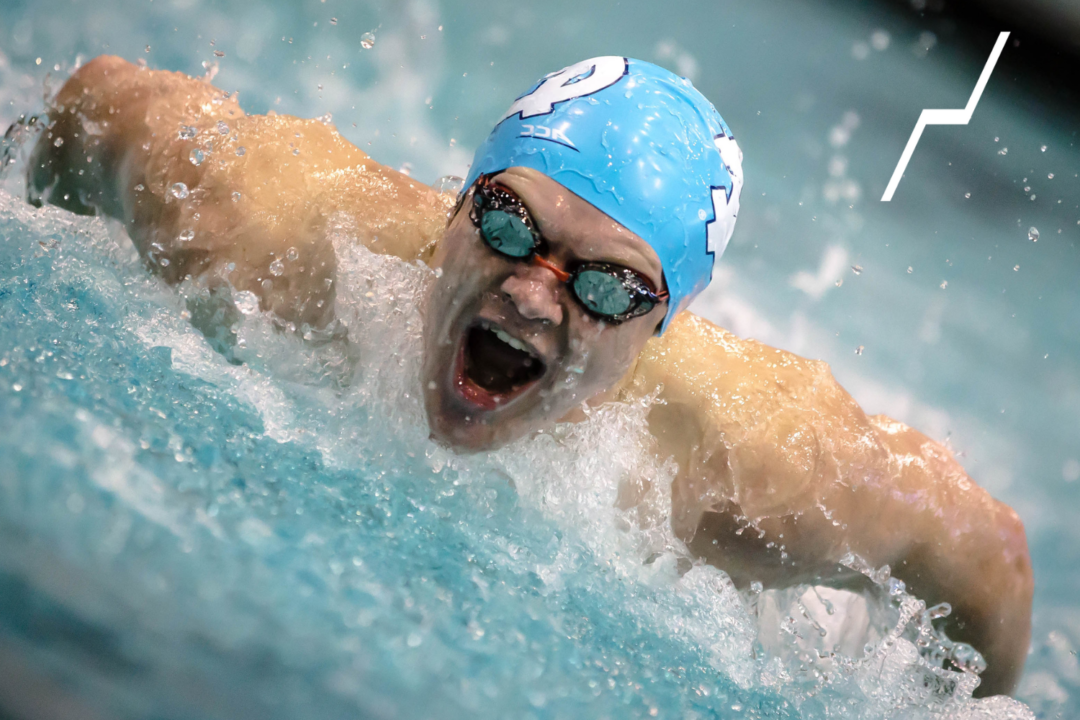Coaches do everything they can to set up all of their swimmers for success on race day, which is why dryland training for sprinters only isn’t the proper approach. All the early morning practices, season planning, and tapers are methodically drawn out in order to make the team as fast as possible when it matters most. However, some coaches mistakenly don’t put the same care or attention into their dryland program.
Something that SURGE Strength trainers have heard repeatedly is that Dryland work is used simply as a time filler in some swim coaches’ minds. We’ve even heard that some coaches think that dryland is just for sprinters. After all, endurance athletes need to spend their time racking up more yardage, right? But, the research suggests the opposite, and here at SURGE Strength, we know that dryland can have a positive impact on every swimmer, regardless of their specialty. When implemented properly, dryland makes swimmers better athletes. They have a higher reserve capacity and a higher potential at the end of a race. Whether that race is 50 yards or 1650 yards, resistance training is crucial to improving performance.
Training Methods – Dryland Training for Sprinters & Distance Swimmers
There are many ways to train. However, not all training plans are created equally. There are pros and cons to all plans. For instance, you could have your swimmers skip dryland to spend more time in the pool. The “pro” here is that they will gain more experience in the water. But, at some point there are diminishing returns to this mindset. For example, you will likely see the rate of shoulder pain and injury increase. The chances of burnout by the end of the season are high.
Maybe you choose to incorporate dryland but keep it short: bodyweight abs and static stretching. Swimmers may see some benefit from this but are missing out on the many other benefits of a comprehensive dryland program. Perhaps you have used dryland as a conditioning tool. After all, endurance athletes need a high aerobic base. Therefore, you turn dryland into bootcamp. This will have a similar effect as swimming endless laps—increased risk of injury and burn out.
At SURGE Strength, we recommend a balance between strength training and time in the pool in order to break through barriers that your athletes are facing (we know there are many!). Even the best swim coaches need guidance when it comes to programming proper dryland. This is because there is an entire discipline of science behind dryland performance. And what the science shows is clear; training type II muscle fibers is the most efficient way to train. Let’s look at how to do that:
Muscle Fiber Types
There are several types of muscle fibers in the human body. The three main types are Type I (slow twitch), Type IIa (fast twitch), and Type IIx (used for max force production). Type I fibers are known for their ability to resist fatigue. Oftentimes, endurance athletes will have well-trained type I fibers. In comparison, Type IIa fibers are efficient at power-based activities such as short sprints. The tradeoff is that they fatigue quickly. For example, sprinters have a dense supply of trained type IIa fibers from drilling short, fast intervals. Type IIx are also considered “fast twitch.” They are for maximizing power over a split second. Think of an Olympic lifter performing a one rep max. See the chart below to see a more thorough comparison of each muscle fiber type.

Keep in mind that ALL humans have some of all three types of muscle fibers in their body. In addition, all three types of fibers play important roles in both swimming and daily activity. Unfortunately (or fortunately) muscle fiber types are determined at birth and cannot be completely transformed or added. Instead, we want to shift these fibers to look more like the Type II fibers. What that does is make our swimmers more powerful at higher intensities.
What About Endurance Athletes?
After learning about muscle fiber types, common sense may tell you that you should prioritize your endurance swimmers type I fibers. After all, these are the fibers that will carry them through a long race. However, research shows that Fast Twitch training, or training your type IIa fibers will ultimately help endurance athletes, especially towards the end of a race.
Trained Type II fibers allow swimmers to swim at higher intensities. Therefore, a pace that was once challenging and unsustainable for more than a few seconds becomes a pace they can maintain for several minutes in a race. While training your swimmers to swim longer has a time and place, training them to be stronger and more powerful elevates their reserve capacity.
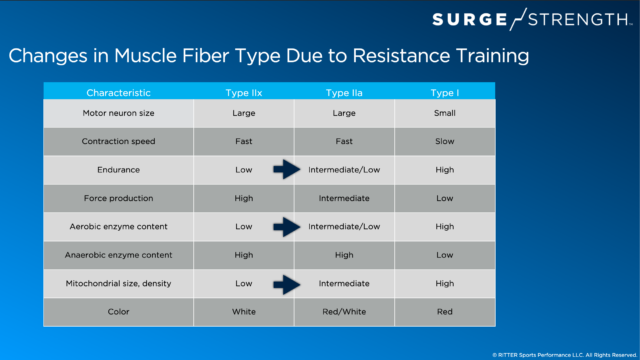
Resistance Training
Resistance training is the simplest and most efficient way to improve type IIa fibers. See Chris’s analogy below. He shows us how to use pull-ups in dryland to improve type IIa muscle fibers. In turn, the swimmer has a faster “easy speed” (which is the swimming word for the science-based concept of reserve capacity).
Implementing Strength Training into Dryland Training for Sprinters & Distance Swimmers
Remember, strength is the basis of both power and endurance. Strength is also the key to training Type IIa fibers. Therefore, the most effective way to conduct dryland is to focus on improving strength.
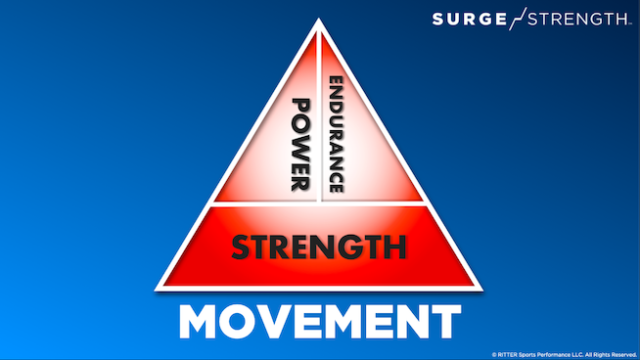
In order to prioritize strength gains, you should program in exercises that cross more than 2 joints and work most of the body at once. A great example of this is a squat. Aim for 2-6 sets of an exercise with less than 6 reps per set. Also, consider taking at least 1-minute rest per sets of an exercise. This way, your dryland truly trains type IIa fibers instead of conditioning the type I fibers. Ideally, swimmers should be lifting challenging weights. The load should be heavy enough that swimmers are fatigued by rep 6.
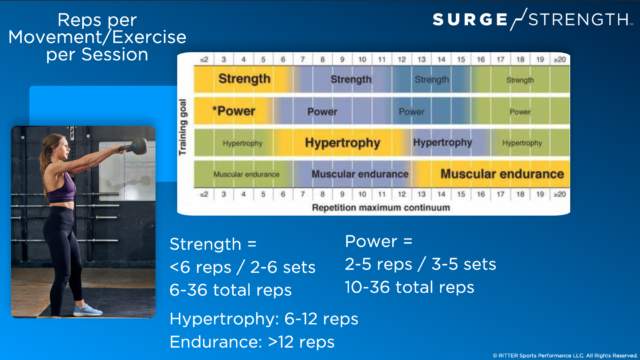
Another way to train this principle is by using time under tension instead of load. Since type IIa fibers fatigue quickly, stick to intense exercises intervals less than 30 seconds. This is a more appropriate way of progressing body weight exercises such as planks, push-ups, or pull-ups. Weight can always be added to make these exercises more challenging instead of doing more reps or lengthening the interval.
It is very easy to creep into hypertrophy training and even endurance training in dryland. This is the mindset of “we use dryland for more cardio.” But by sticking to the appropriate training variables, swimmers will be working their Fast Twitch fibers. In turn, they gain strength and build the proper foundation needed to build both power and endurance. When swimmers hop in the pool on race day, they will be faster right off the blocks. They will go further without needing to drop their speed. In turn, their entire race will be faster. Dryland resistance training elevates the speed of a race for sprinters and endurance athletes alike.
NEW – AT HOME DRYLAND WORKOUT
GET IT FOR FREE BY ENROLLING IN THE SURGE STRENGTH ACADEMY
JOIN OTHERS FROM AROUND THE WORLD THAT ARE
BECOMING SURGE STRENGTH DRYLAND CERTIFIED (SSDC)
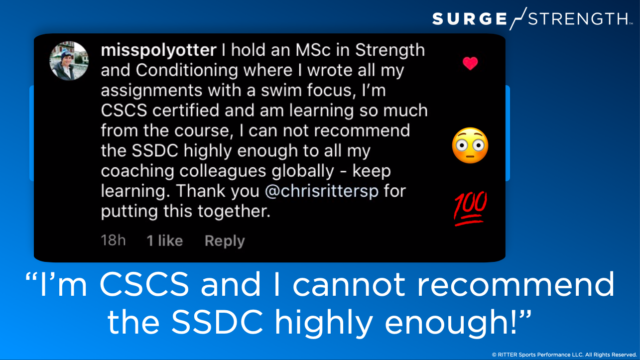
BECOME SURGE STRENGTH DRYLAND CERTIFIED (SSDC)
BUILD BETTER ATHLETES TO GENERATE FASTER SWIMMERS
Courtesy of SwimSwam’s exclusive dryland training partner, SURGE Strength.
SURGE Strength, a strength training brand created by Chris Ritter, CEO of RITTER Sports Performance, aims to build better athletes and faster swimmers through dryland programs, and coaching education.
